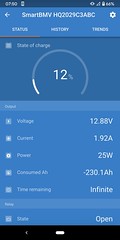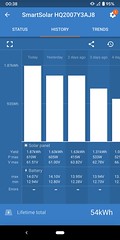Hello,
I'm currently putting together a part-list for a system for someone else to build. Looking at solar charge controllers. Victron seems to be the gold standard, but they don't have any display it's all through bluetooth and you need a dongle -- so unsure how easy it will be to modify the software settings. So looking at other options like SolarEpic that have a physical display
Specifically want to handle 2x 400 watt panels. According to the calculator, needs to handle 100 volts 60 or 70 amps (depending on panel brand). Does that seem right? Any recommendations?
I'm currently putting together a part-list for a system for someone else to build. Looking at solar charge controllers. Victron seems to be the gold standard, but they don't have any display it's all through bluetooth and you need a dongle -- so unsure how easy it will be to modify the software settings. So looking at other options like SolarEpic that have a physical display
Specifically want to handle 2x 400 watt panels. According to the calculator, needs to handle 100 volts 60 or 70 amps (depending on panel brand). Does that seem right? Any recommendations?






